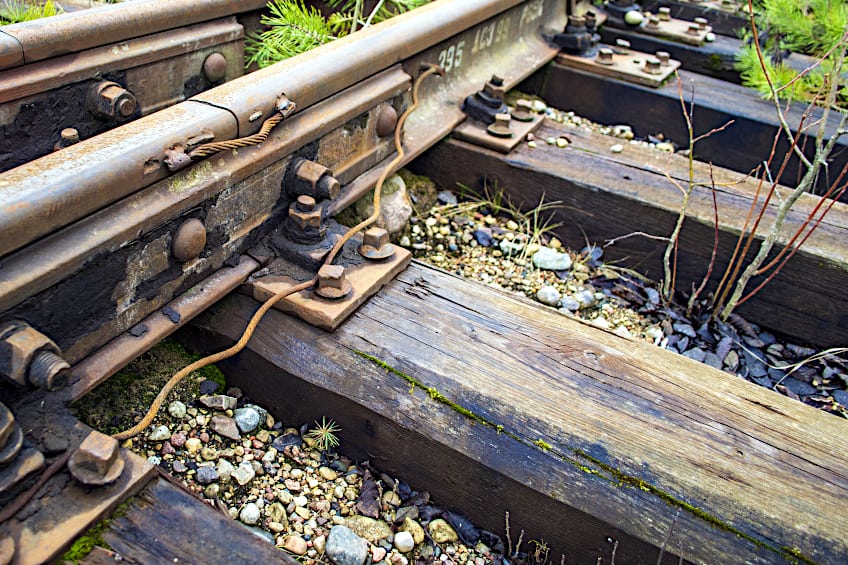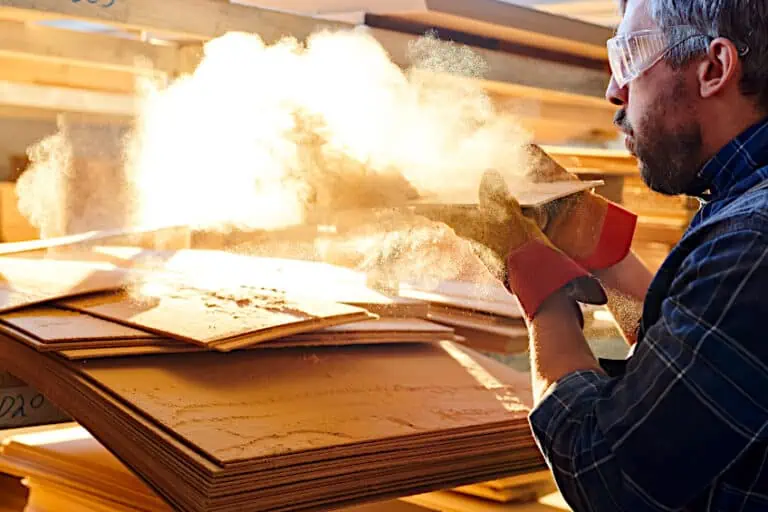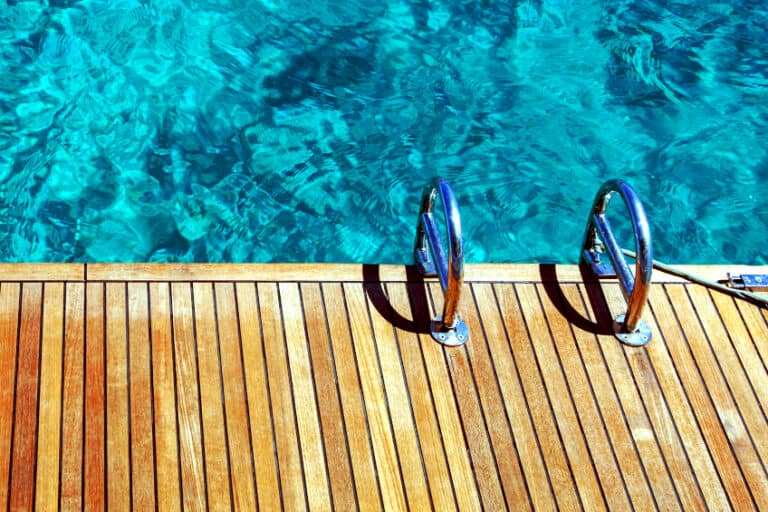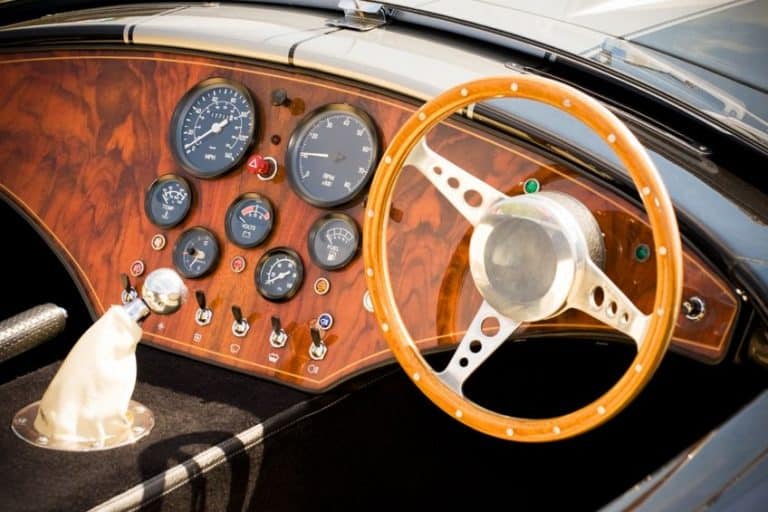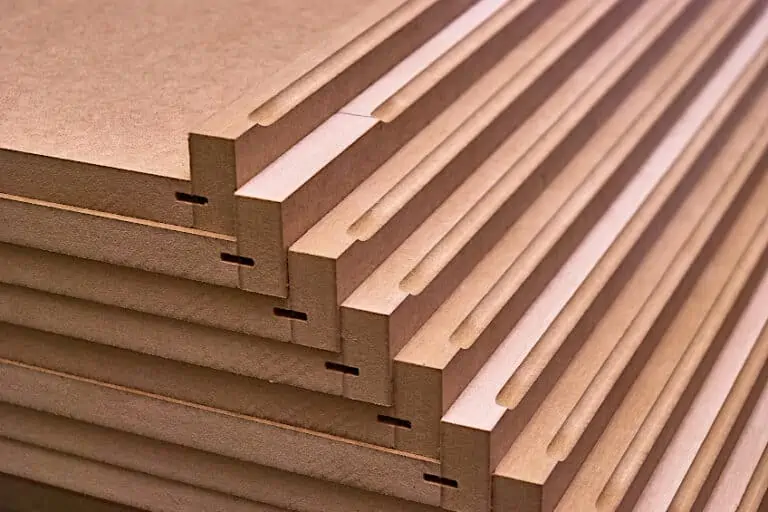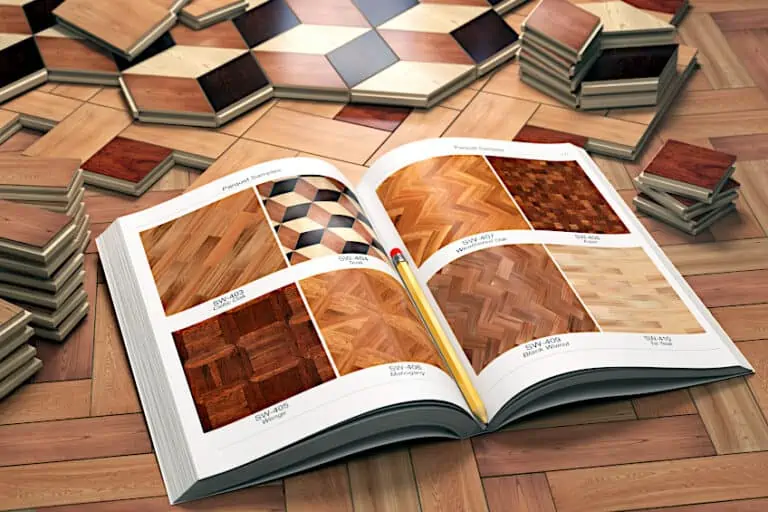Hardest Wood in the World – Top Scoring Janka Scale Timber
There are loads of wood species out there, some can be found right in your front yard and others can be found hundreds of thousands of miles away on different continents. Regardless of where they come from, all woods tend to have a certain degree of hardness to them, which we have used to create things like shelter, furnishings, vehicles, and even tools. The hardness of a wood is generally what determines what it’s used for, but things like appearance and workability play equally important roles when making a choice. This being said, have you ever wondered what the hardest wood in the world is? We have, this is why we’ve decided to check out some of the hardest wood species around and find out where they come from, what they’re used for, and just what makes them so hard.
Table of Contents
- 1 How Is Wood Hardness Determined?
- 2 What Is the Hardest Wood Species Out There?
- 2.1 Australian Buloke (Allocasuarina)
- 2.2 Baraúna (Schinopsis Brasiliensis)
- 2.3 Quebracho (Schinopsis Balansae)
- 2.4 Lignum Vitae (Guaiacum officinale)
- 2.5 Gidgee (Acacia Cambagei)
- 2.6 Piptadenia Macrocarpa (Anadenanthera Colubrina var. Cebil)
- 2.7 Snake Wood (Piratinera Guianensis)
- 2.8 Verawood (Bulnesia Arborea)
- 2.9 Brazilian Olivewood (Ocotea)
- 2.10 Brazilian Ebony (Swartzia)
- 2.11 Brazilian Walnut (Ocotea Porosa)
- 2.12 Camelthorn (Vachellia Erioloba)
- 2.13 African Pearwood (Bailonela)
- 2.14 African Blackwood (Dalbergia Melanoxylon)
- 2.15 Black Ironwood (Olea Capensis)
- 2.16 Katalox/ Wamara (Swartzia spp.)
- 2.17 Cebil (Anadenanthera Colubrina)
- 2.18 Leadwood (Combretum)
- 3 Frequently Asked Questions
How Is Wood Hardness Determined?
Before we make our pick for the hardest wood in the world, we figured it’s a good idea to discuss what makes certain woods harder than others, and how the hardness of a wood is measured. This might seem silly considering that you could simply feel or bend the wood board to determine its hardness but considering that we’re trying to establish that hardest wood out there, we’ve decided to use a more scientific approach.
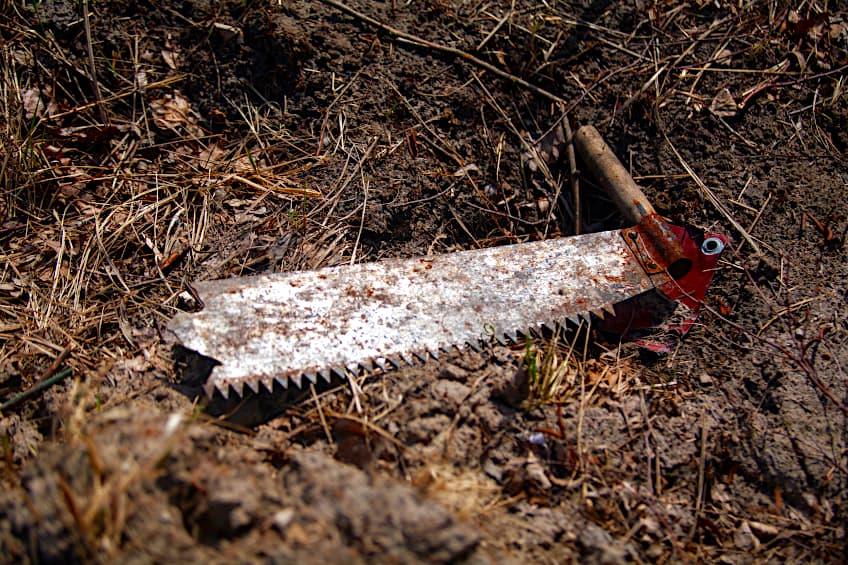
The hardness of any wood board is determined (usually) by how dense it is. Even if you have a very basic understanding of physics, you should be able to understand that the denser something is, the heavier it is, and the denser and heavier an object is, the harder it is to penetrate (with a few exceptions here and there. A simple example of this is how easy it is to hook a hole through an A4 page with your finger, but it is considerably more challenging if the same piece of paper has been rolled up into a ball.

The same principle applies to wood boards. When wood fibers are packed closely together it makes the wood heavier and harder. This is because there are very few gaps in the wood grain, which from an evolutionary standpoint means that the tree can support more weight, weather storms, avoid infestation, and use its minerals and moisture content more efficiently.
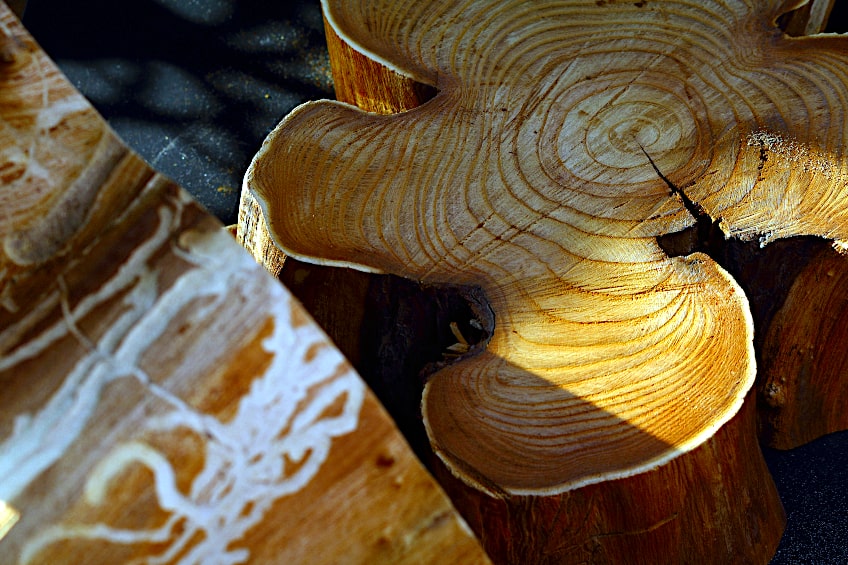
Have you ever wondered how hardness is measured? Well, like most things that we measure, hardness is measured on a scale. What is this scale? It’s known as the Janka Scale and was invented by a gentleman named Gabriel Janka. Janka needed a way to measure how easy it is to dent a piece of wood in comparison to others, and as a result, he created this comparative metric to get the job done.
The average hardness rating for most hardwood species tends to be around 1300 to 1500 on the Janka scale. Wood species that measure below or under this threshold tend to be really soft, which tends to make the identification of wood that are inherently special fairly easy. Exceptionally hardwood species are seldom used in everyday applications though. as they tend to be expensive and challenging to work with.
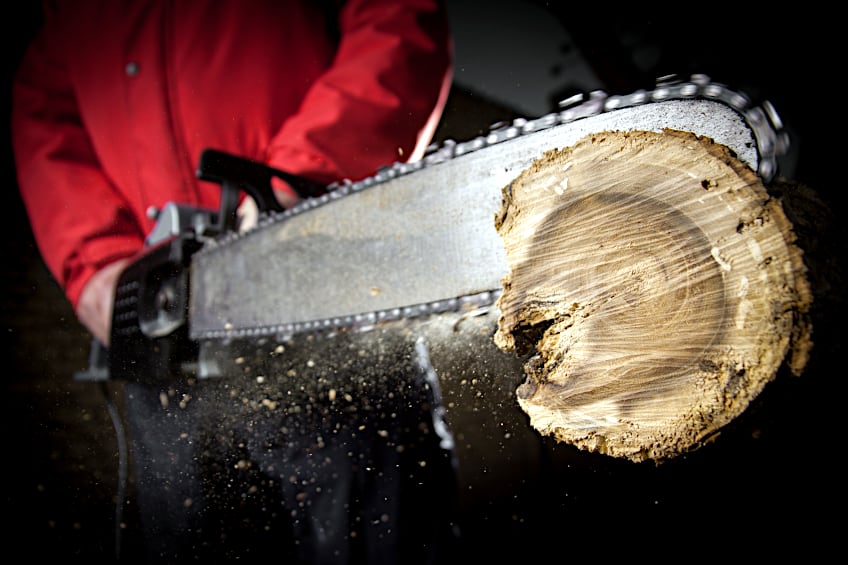
How Do You Perform the Janka Test?
The Janka test was first officially implemented by the USDA when one of their employees (Gabriel Janka) designed it as an informal method to test the overall hardness of a wood board. This process was refined and implemented as a standard procedure over time. Essentially, wood boards are subjected to stress and graded according to their tolerance over time.
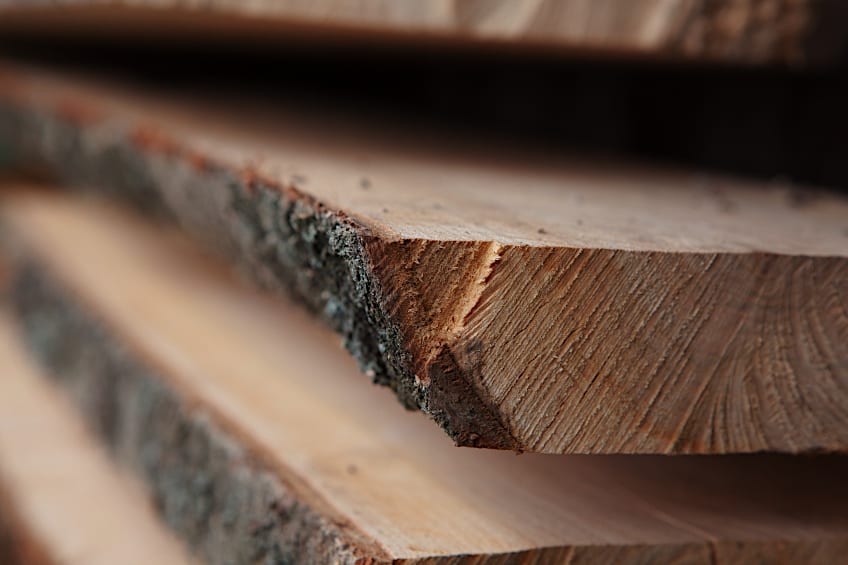
The test itself is simple. A metal ball is placed on an area of the wood board and force is then applied to the ball, which translates to the wood board. The ball usually has a little belt around its radius, which functions as a mark for the halfway point. Once the ball has penetrated the wood up to the belt, the test is concluded and the amount of force it took to penetrate the wood to this point is the board’s Janka rating (sort of).

While the execution of the test is pretty straightforward, the preparations and the condition of the wood need to be precise. The wood board being tested must have no more than 12-percent moisture content. The board in question also needs to be two inches wide, two-inches high, and six inches in length.
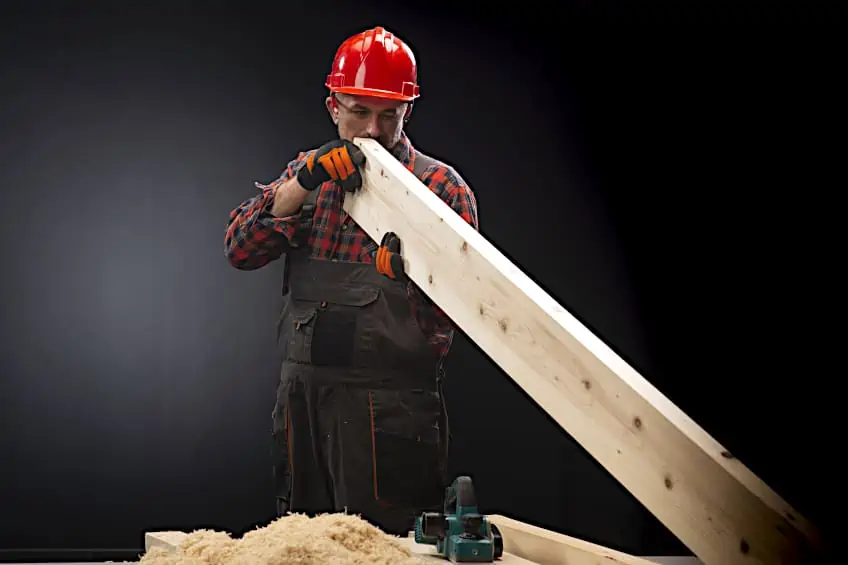
The ball is pressed into the board on both sides to ensure consistency. Other parameters for the test include that the board should be free of knots and that the rate at which force is applied should be no more and no less than 0.25-inches every minute. The board itself should come from the heartwood of the tree and not limbs such as branches or sapwood.
What Is the Hardest Wood Species Out There?
What is the hardest wood species? Hardness is one of the few attributes of a material that tends to be absolute. Where stiffness and even overall size can be altered, the physical density of wood species is pretty difficult to change. This being said, we’ve taken a look at the hardest wood species out there and prepared a short table as well as a brief description of their application and genus.
| Hardwood Species (Genus) | Janka Hardness Rating LBF (Pound Force) | Country of Origin |
| Australian Buloke (Allocasuarina) | 5060 LBF | Eastern and Southern Australia |
| Baraúna (Schinopsis brasiliensis) | 4800 LBF | Brazil |
| Quebracho (Schinopsis balansae) | 4570 LBF | Argentina, Brazil, El Salvedor, Columbia, Honduras, Paraguay |
| Lignum Vitae (Guaiacum officinale)
| 4390 – 4500 LBF | South America |
| Gidgee (Acacia Cambagei)
| 4270 LBF | Australia |
| Piptadenia Macrocarpa
| 3840 LBF | Argentina, Bolivia, Peru |
| Snake Wood (Piratinera Guianensis)
| 3800 LBF | West Austraila |
| Verawood (Bulnesia Arborea)
| 3710 LBF | Columbia and Venezuela |
| Brazilian Olivewood (Ocotea)
| 3700 LBF | Brazil |
| Brazilian Ebony (Swartzia)
| 3692 LBF | Brazil |
| Brazilian Walnut (Ocotea Porosa)
| 3684 LBF | Brazil |
| Camelthorn (Vachellia erioloba)
| 3680 LBF | South Africa |
| African Pearwood (Bailonela)
| 3680 LBF | West Africa |
| African Blackwood (Dalbergia melanoxylon)
| 3670 LBF | South Africa |
| Black Ironwood (Olea Capensis)
| 3660 LBF | Southern, Western, Eastern, and Northern Africa |
| Katalox/ Wamara (Swartzia spp.)
| 3655 LBF | Brazil |
| Cebil (Anadenanthera Colubrina)
| 3630 LBF | Brazil, Paraguay, Peru |
| Leadwood (Combretum) | 3570 LBF | South Africa |
Australian Buloke (Allocasuarina)
This is arguably the strongest hardwood species out there. We say arguably because every time someone tests a board from this tree, the density tends to be slightly or very different depending on where the tree was harvested and how old it is. This disparity has made many wood crafters skeptical about the actual hardness of this wood species.
This being said, most examples are still pretty hard, which doesn’t come as much of a surprise considering where these are grown. Australia’s weather system can vary considerably, which is why this tree has developed such “thick skin” to not only protect it from the weather but from any insects or animals that might want to get inside it.
Baraúna (Schinopsis Brasiliensis)
If you like nuts, then you’ll be happy to know that this wood species shares its lineage with cashew trees. Not only does this wood species bear some tasty treats, but it’s also one of the hardest wood species out there. This wood species is indigenous to Brazil and is one of the more high-end wood species native to the country.
Thanks to its incredible density this wood has great load-bearing capabilities. This is why it is one of the most commonly used woods for construction applications. The wood fibers of this tree are so well packed that they are even capable of absorbing quite a bit of shock, which means they can be used to create raised platforms and struts too.
Quebracho (Schinopsis Balansae)
Quebracho is one of the hardest wood species on the face of the planet, and is world-renowned for its versatility and has been used in various industries around the world to make things like furniture, decks, structural beams, and even high-end installation art pieces. Its name, Quebracho, literally means ax breaker, which is a testament to how hard it is.
What makes this wood species so hard? Well, it’s one of the most densely packed woods out there, which also makes it quite heavy. These characteristics make it one of the best woods for outdoor applications like decks, benches, tree houses, and even pottery shelving. This wood can be a bit difficult to work with since it’s quite dense, but the finished product is often well worth the effort.
Lignum Vitae (Guaiacum officinale)
Lignum Vitae is another wood that is considered by loads of people to be the strongest wood in the world. It is extremely durable and doesn’t look too bad either. At one point it was one of the most sought-after wood species on the market, and as a result, this species was overharvested. These days it is considered an endangered species and is protected under CITES.
This wood has a fine texture and tends to retain little to no water, which makes it yet another hardwood that’s great for outdoor applications. However, because of its remarkable density, this wood can be exceedingly challenging to treat with things like varnish, tung oil, linseed oil, and even wood stain. This being said, it’s not impossible to treat, but it can take some patience to do effectively.
Gidgee (Acacia Cambagei)
This tree is somewhat of a staple in remote regions of Australia. It has adapted to some of the harshest conditions that this part of the world has to offer by developing denser wood particles capable of protecting it from both the weather and potential predators. The Gidgee tree tends to have a hardwood consisting of a dark brown hue and sapwood consisting of an off-yellow color, which makes for unique and eye-catching furniture.
A characteristic of the Gidgee tree that makes it easily identifiable is the dark shade of its heartwood. This wood can be so dark in color that it can be easily mistaken for the ebony wood species. Although it isn’t the strongest hardwood out there, it is most certainly not soft, after all, it has a Janka rating of 4270 LBF, which can make it fairly challenging to work with too.
Piptadenia Macrocarpa (Anadenanthera Colubrina var. Cebil)
This might not be the strongest hardwood out there, but it’s far from being soft. Piptadenia is found nearly exclusively in parts of South America but seems to be especially concentrated in Brazil specifically. These trees are pretty big, usually featuring a diameter of 3.28 feet and a height of over 114 feet, plus their wood tends to be some of the hardest available in the region.
Due to the amount of moisture and nutrients located in and around the regions these trees are found, they grow relatively quickly compared to other plant life in their ecosystems. Although they can grow in rainforests, they tend to fare better in environments with soil that hasn’t been completely saturated with moisture.
Snake Wood (Piratinera Guianensis)
If the name of this wood concerns you, we can assure you that the chances of them being infested with those slithery guys are the same as any other tree. Snake wood is simply one of many names given to this wood/tree species by indigenous people over time. It’s actually called snake wood because of how thin its limbs are, only measuring around a foot in width and up to 60 feet in height.
This wood is extremely dense and tends to be dark brown in color with the odd black spot here and there. The heartwood does grow lighter when exposed to air, so if you’d like to retain that dark color, we recommend sealing your wood as soon as possible. Like any wood that’s really dense, it can be challenging to work with, but well worth it thanks to its rich color and durability.
Verawood (Bulnesia Arborea)
If you’re in the market for a hardwood that won’t break easily but doesn’t have tons of cash to spend, we think Verawood is a really good option. Verawood is inexpensive, really available, and it looks great too. The heartwood is either a light olive green or a dark, mossy green. Both of these colors tend to give any furnishings fashioned from them an earthy modern feel.
Another characteristic that makes this wood so sought after is its nearly perfectly straight grain. This means that it makes a great medium for design applications and even veneer. Furnishings also tend to get darker with time if they aren’t sealed, which makes for an authentic rustic aesthetic if implemented correctly. It is also one of the most durable hardwood species around, which ensures anything that you make from it is likely to last more than your lifetime.
Brazilian Olivewood (Ocotea)
Another one of the most durable wood species out there is the acclaimed Brazilian Olivewood. This wood species is one of the best looking on this list too, even if isn’t the strongest hardwood species. It is prized for its rich tan-yellow hues, which are often brown with streaks of dark brown, which run parallel to the grain’s direction.
As the name suggests this wood species is native to Brazil and is most commonly associated with the more high-end variation of this genus, the Brazilian Walnut. They’re pretty closely linked, but any wood crafter worth their weight in sawdust can tell the difference immediately so be wary of those who try and pass one off as the other.
Brazilian Ebony (Swartzia)
Brazilian Ebony is even more sought after than the Olivewood we mentioned previously. This is because its color is almost entirely enough, sporting a hue that is so dark that the heartwood can appear completely black at first glance. The grain of this hardwood is relatively straight and tightly packed, which makes it one of the most durable wood species in the region.
If you ever have the chance to harvest this wood species firsthand, don’t be surprised that the heartwood isn’t that deep dark brown color. The near-black color is a result of the heartwood reacting with the oxygen-rich environment (as it spends its lifetime tucked inside the tree’s trunk), which causes it to darken over time.
Brazilian Walnut (Ocotea Porosa)
Even though this wood is native to South America it has proven to be even more popular in the United States. Why, you ask? Well, considering how durable it is many people use this wood to make things like exterior decks, wooden flooring, outdoor swings, and high-end furnishings. Now, high-end furnishings and outdoor swings might seem like a stark contrast in terms of application, but we can explain.
In addition to being one of the most durable hardwood species out there right now, Brazilian Walnut (like conventional walnut) also looks incredible. This wood features deep tones of light and dark brown, which flow along its straight grain to create a seamlessly beautiful aesthetic that’s sure to turn heads no matter what you choose to use it for.
Camelthorn (Vachellia Erioloba)
You may have noticed a trend when discussing really hardwood species. They tend to grow in environments that are particularly harsh, and as a result, the Camelthorn tree is one of the toughest wood species out there. Native to Southern Africa and its surrounding regions, this wood thrives in harsh, desolate environments, which is why its wood is so durable.
The heartwood ranges from a dark purple color to a reddish brown depending on its age and environmental factors, while the sapwood can be a pale yellow or pink. This wood, while not on the CITES list, can only be harvested with the appropriate documentation and therefore tends to be sought after by those looking for a unique and interesting medium for the crafts.
African Pearwood (Bailonela)
Yet another durable hardwood species native to the African continent is the African Pearwood. This wood can be found on the coastal regions of the continent, with trees stretching all the way up to 200 feet tall and sporting a diameter of ten feet to boot! These giants produce some of the hardest wood on the planet with a Janka rating of 3680 LBF.
This wood tends to have an interesting color range, showing a pale-yellow heartwood and sapwood that features a light pink tinge on the brown overtone. Despite this, the wood is evenly colored, which is strange considering it has a unique, interlocking straight grain pattern. This wood is typically used for construction, furniture making, and joinery.
African Blackwood (Dalbergia Melanoxylon)
As you can probably tell from the name this wood is also from the African continent, but it’s found specifically in West Angola, Mozambique, Sudan, and Northern Nigeria. Unlike the pearwood tree, this one is fairly small, but it seems that what it lacks in outright size it makes up in density, featuring a Janka hardness rating of 3670 LBF.
While it might be called blackwood this wood tends to have a heartwood with a slight purple tinge attached to the overall brown. Like Brazilian blackwood, the longer the heartwood is left out the darker it becomes, as it allows the black streaks to overwhelm the color pallet of the wood. This wood also tends to be heavy and challenging to cut even though the grain is relatively straight.
Black Ironwood (Olea Capensis)
Another great wood for all manner of applications is black ironwood. This wood is found in Southern Africa, and as the name suggests, it’s pretty tough. The tree the wood is derived from is capable of growing up to 114 feet, which means that there’s quite a lot of wood to harvest once the season rolls around.
The wood of the black iron tree features a fine, straight grain that protects it from things like moisture, rot, and insects. This grain is densely packed, which makes it sturdy enough to withstand rather harsh coastal winds. The heartwood of this tree can range from dark brown to grey, to black, and its sapwood tends to be a light shade of pink with hits of grey thrown into the mix.
Katalox/ Wamara (Swartzia spp.)
Katalox is one of the most unique wood species on this list. Native to Central America this wood is durable, dense, heavy, and tightly grained. This wood is used for a number of applications that would otherwise defeat similarly-looking woods like teak and maple. Katalox features a dark brown color with hints of red scattered around the wood grain.
This wood species is straight-grained and relatively easy to work with especially compared to some of the other wood species we’ve covered so far. It tends to get darker over time like most other wood species native to Central America, and this has made it a crowd favorite for those looking to fashion guitars and small furniture items as the aesthetic it creates is minimalist yet impactful.
Cebil (Anadenanthera Colubrina)
Sticking to the theme of Brazilian hardwoods, we have Cebil. If you’re looking at this list of woods by hardness (or ones like it) then this is sure to be on it (be it somewhere near the bottom) as it is durable, slightly easier to work with compared to other hardwoods, and it looks pretty cool too. What makes this wood popular among crafters is that it is easy to sand, and if cut at an angle, can be fashioned into virtually any form.
How does it look, you ask? Cebil wood tends to have a dark brown heartwood, which explains why it’s such a popular wood for furnishings and pale pink sapwood, which can be used for trim pieces and framing applications. This wood can also be used for construction and load-bearing applications and considering that these trees can grow up to 90 feet you’ll have some good-looking structural beams.
Leadwood (Combretum)
Leadwood is somewhat of a rare wood species to find in the United States, which means that you’ll likely pay a pretty penny for it. However, if you manage to get your hands on some you’d do well to use it to make things like musical instruments or decorative items as this is where the color and grain of this wood shine.
Since it’s hard and dense, it can be challenging to cut and/or turn. Don’t let this deter you though, its deep brown color looks scarily close to black, which means you’ll have completely unique workpieces that are sure to be a conversation starter. This wood species is actually closely related to other woods found in Southern Africa despite the difference in appearance.
Now that you know what the hardest wood in the world is, have a comprehensive list of woods by hardness, know what exactly makes a wood species hard, and understand the relationship between density and weight, it’s time for you to get out there and put your newfound knowledge to the test! Remember that the denser the wood is, the more challenging it will be to work with.
Frequently Asked Questions
Does Wood Have Hardness?
Most solid materials have a hardness that can be measured and used comparatively. Wood is no exception, and if you’re looking to measure the hardness of a wood board the best way to go about it is to use the Janka test. This allows you to measure the hardness of a wood species and compare it to others.
What Does Hardness Mean in Wood?
If you aren’t familiar with tolerances the term hardness might be a bit challenging to define. When discussing wood, the term hardness refers to the capacity of the wood in question to resist damage caused by external forces. Primarily its resistance to impact and abrasion.
What’s the Hardest Wood in The World?
What is the hardest wood species you ask? Well, Australian Buloke is widely considered to be the hardest wood species in the world. However, results do vary from specimen to specimen, and this doesn’t mean that there aren’t instances of other wood species being as hard or even harder than this one.

I have been into woodworking since 2005 and woodturning since 2011. Because of my love for wood and woodworking, I started woodhappen.com to teach other enthusiasts about how to finish and seal wood, the best woodworking tools, the different types of wood, and everything else related to woodworking! Read more about me here.

